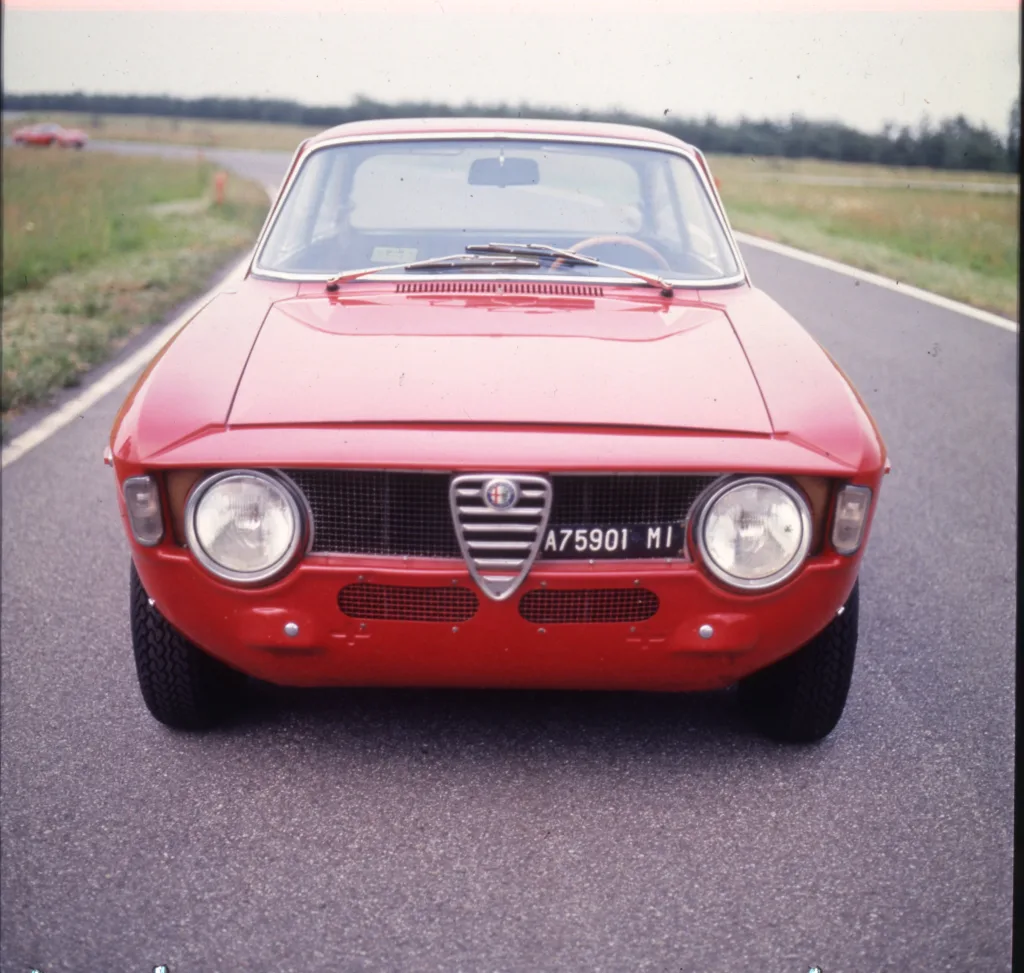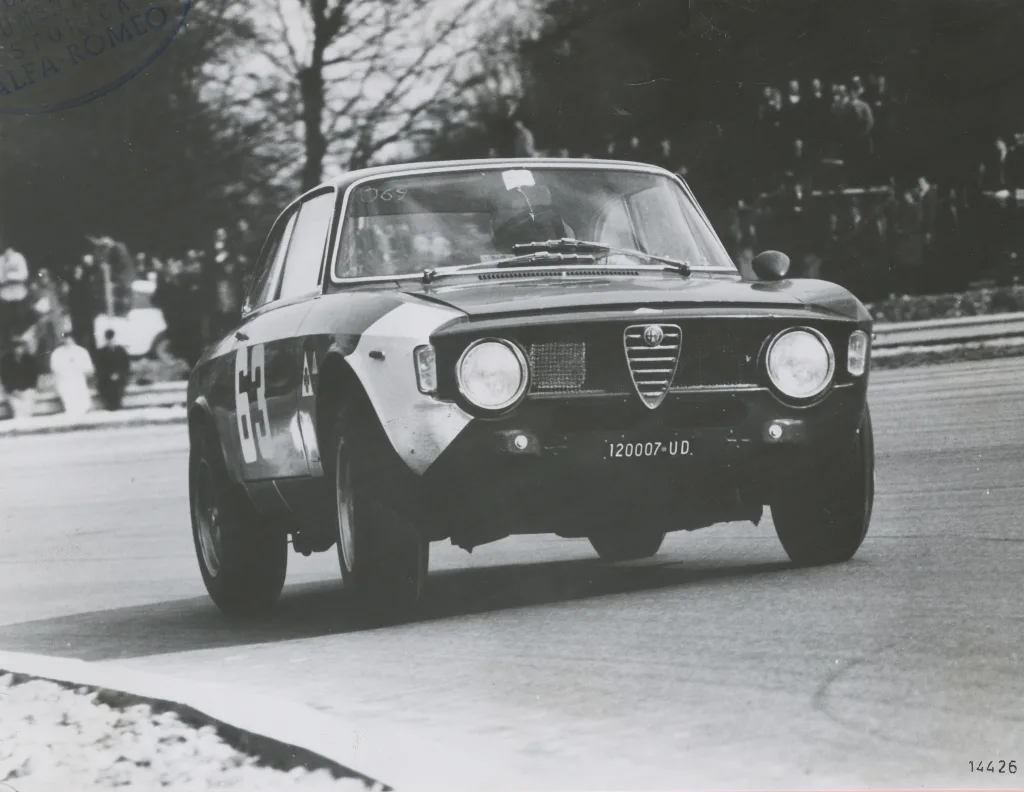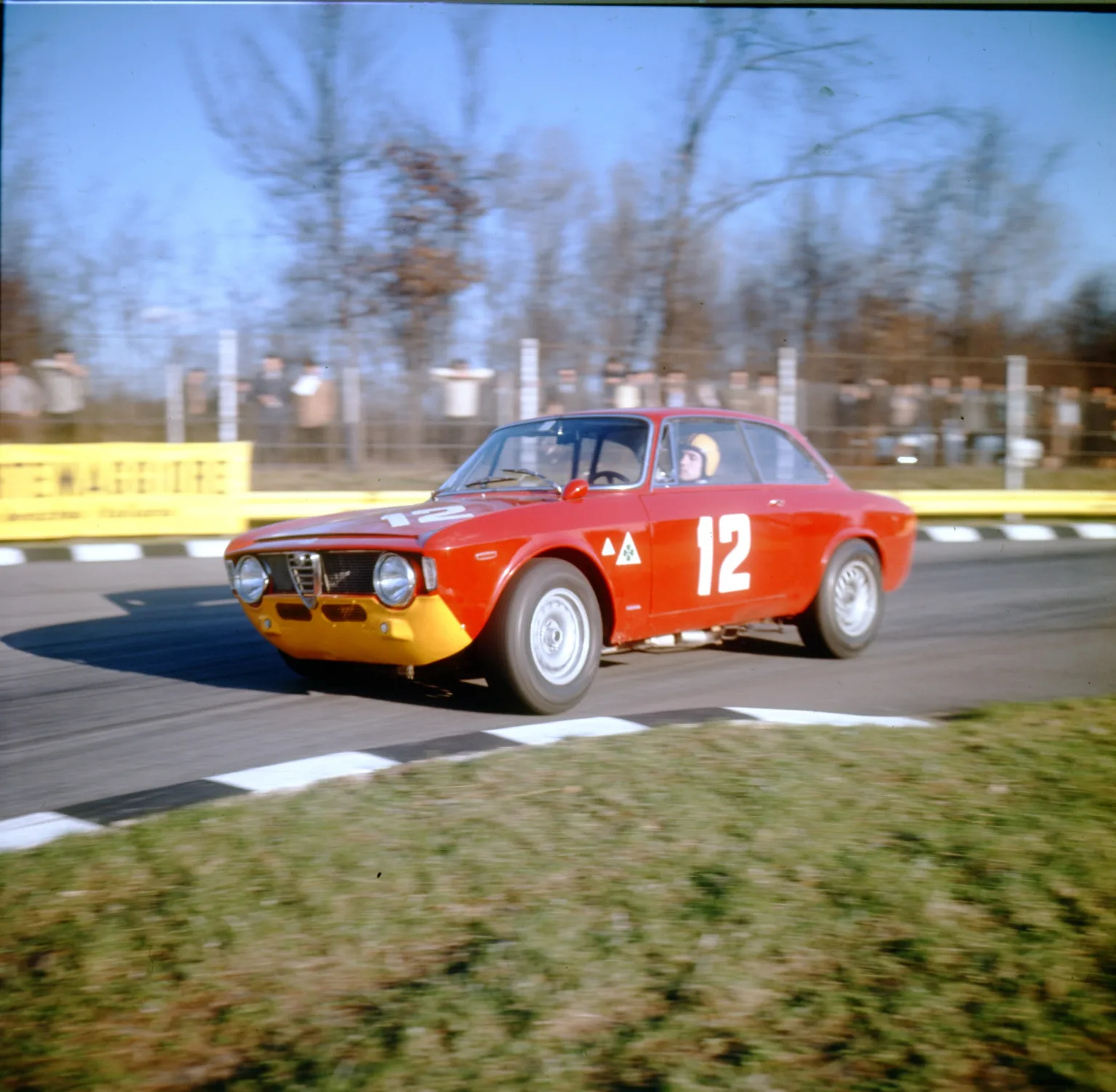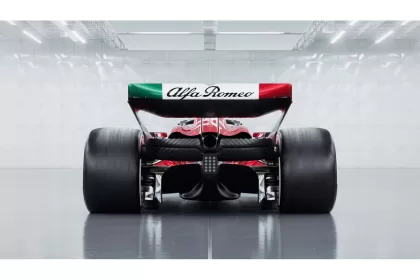- The renowned classic car magazine names the GTA variant of the Alfa Romeo Giulia the winner of the “Italian Classics” category.
- The ultra-light coupé served as the basic model for one of the most successful touring cars of the 1960s.
- Alfa Romeo is regularly one of the winners in the Motor Klassik readers’ poll.
Almost exactly 60 years after its first success on the track, the Alfa Romeo GTA celebrates another victory: the iconic coupé, first to cross the finish line at the “1000 Kilometers of Monza” in April 1965, is among the winners of the “Motor Klassik Awards 2025.” Readers of the renowned classic car magazine, published since 1984, chose the Alfa Romeo GTA as their favorite in the “Italian Classics” category of the competition. More than 17,000 readers participated in the 2025 edition of the annual “Motor Klassik Award” competition by casting their votes in 20 categories including “Italian Classics,” where the Alfa Romeo GTA beat renowned competitors such as Ferrari, Maserati and Lamborghini.
Known for its light alloy bodywork, the GTA received 37.6% of the votes, continuing Alfa Romeo’s string of successes in the “Motor Klassik Award.” Most recently, in 2023, the 1980s Alfa Romeo GTV6 received the prestigious award. Presented in 1965, the Alfa Romeo GTA was based on the coupé version of the Giulia. However, instead of a steel body, it was built almost entirely of light alloy. Designed as a basic vehicle for motorsport, the two-door car weighed just 745 kg. Its 1.6-liter four-cylinder engine, with dual overhead camshafts and dual ignition per cylinder, was one of the most advanced engines of its era.
Alfa Romeo GTA – Domination of motorsport
In the 1960s, Alfa Romeo redefined its strategy in motorsport. After winning two Formula 1 world championships — in 1950 with Giuseppe “Nino” Farina and in 1951 with Juan Manuel Fangio — the focus shifted to mass-production touring cars, a great attraction for racing fans. Endurance races at Nürburgring, Monza, Brands Hatch and Zandvoort attracted hundreds of thousands of spectators. Autodelta, Alfa Romeo’s racing department, planned a major coup: an extremely lightweight version of the Giulia Sprint GT.

To reduce weight, the engineers made extensive changes to the body structure. Instead of steel, they used Peraluman, an alloy of aluminum, magnesium, zinc and manganese, for the exterior panels. The doors, bonnet and all non-load-bearing parts of the body were made of aluminum, while only the floor and roof pillars remained in steel. The side and rear windows were made of light Plexiglas. The 1.6-liter engine was also thoroughly revised. The block was already made of aluminum, but now the oil pan, front engine cover, valve cover, gearbox bell and rear gearbox cover were also cast in Elektron, an alloy of magnesium. Equipped with dual ignition and two 45-mm double-barrel Weber carburetors, the famous “twin-cam” delivered an impressive 115 hp.
The car known as the GTA, where the “A” stood for alleggerita (‘lightened’), ultimately weighed just 745 kg – over 200 less than a conventional Sprint GT. In addition, it was aesthetically recognizable for the additional air intakes in the front, the door handles in the shape of lightweight aluminum rings, the Campagnolo magnesium rims, the visible rivets for fixing the bodywork, the sports steering wheel and the stickers with the Quadrifoglio Verde, a lucky charm. Alfa Romeo presented the production model, officially known as the Giulia Sprint 1600 GTA, at the 1965 Amsterdam Motor Show. The only two colors available were red and white.
Alfa Romeo GTA: A frequent winner in motorsport
For use in competition, Autodelta further modified the Alfa Romeo GTA. The racing versions had a 90-liter tank, oil cooler, roll cage, ZF limited-slip differential, stabilizer bar even on the rear axle and a longer fifth gear ratio. Additional racing parts were available, such as special front suspension, a modified driver-slide rear axle, and different gear and differential ratios. The interior was also even more spartan: in some models, the dashboard was made of a type of cardboard covered with a decorative film.

The engine output increased to about 170 hp thanks to the use of specific pistons, a steel exhaust manifold with a larger diameter, supercharged camshafts and a resonance box above the intake trumpets. The racing exhaust, which exited sideways under the driver’s door, produced an unmistakable sound. In the latter half of the 1960s, the Alfa Romeo GTA dominated the 1.6-liter class in touring car racing. Factory driver Andrea de Adamich (Italy) won the European Championship in 1966 and 1967, while Spartaco Dini (Italy) won the title in 1969. Alfa Romeo also won the constructors’ title in the same years.
One of the most famous drivers in the GTA was the future Formula 1 world champion Jochen Rindt. In addition, the Alfa Romeo GTA achieved countless victories in national championships, hill climbs and even rallies. In Germany, the Giulia Sprint 1600 GTA, produced in only about 500 units, cost about 21,500 Deutschmarks in 1965, making it one of the most expensive production cars. In 1968, Alfa Romeo also introduced a 1300 version, which was also produced in about 500 units. Today, the GTA versions of the Giulia Sprint are among the most sought-after classic cars, with prices well over €100,000. Racing cars with a documented history are often worth three times as much.















